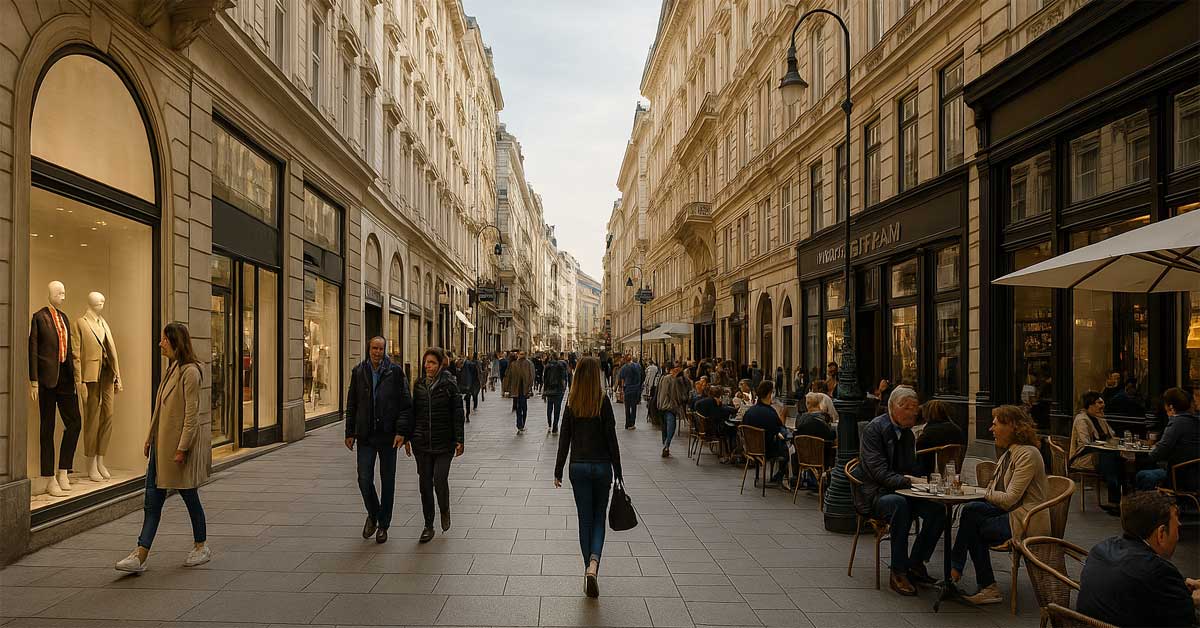

5 April 2025  Status Quo: A Sector Under PressureAustria's fashion retail landscape is undergoing profound transformation. According to the annual "City Retail Health Check" - Fashion.at reported in February (article) - the sector is facing mounting challenges brought on by shifting consumer behavior, rising operational costs, and increasing dominance of international players. Traditional models of retail are being tested, with independent and mid-sized labels often struggling to keep up with the rapid pace of change.Among the most pressing concerns are changing shopping habits, the growing role of e-commerce, and the pressure to adapt to new technologies, such as artificial intelligence-driven stock management and customer targeting. Many retailers are responding with a combination of cost-cutting strategies, store closures, and diversification efforts. However, these measures often prove insufficient in a market that increasingly favors global mega-brands with streamlined, scalable business models. After Gössl: Another Traditional Label Bows OutThe current auction of Gössl's Trachten collections via the Aurena platform (article) marked a quiet farewell from a label known not only for its high-end traditional garments but also for its integrated production and retail structure. With its signature craftsmanship and in-house design, Gössl represented a business model that now seems increasingly difficult to sustain.On 4 April 2025, news broke that Jones Fashion, a staple in Austrian women's fashion for over five decades, would cease operations. The announcement was made through a press release distributed by APA-OTS and was echoed emotionally in an Instagram post by the owners Doris and Gabor Rose, who thanked loyal customers and staff for 53 years of shared history. Like Gössl, Jones combined the creative, manufacturing, and retail sides of fashion in one company — a model that appears to be falling out of step with the times. Consumer Behavior and Rising Costs: The Core of the CrisisIn the official press release, Gabor Rose cited changed consumer habits and significant cost increases as the main reasons for the closure. Despite efforts to stabilize operations through cost-saving measures, a sustainable solution could not be found. The company, known for its business and casual women's wear, operates 30 stores in Austria and franchises across several countries. While up to 80 jobs are expected to be preserved through takeovers by international brands, the Jones label will disappear by summer 2025.This development follows a longer trend of store closures as reported by Fashion.at in February 2024 (article). At the time, Jones was already reassessing its strategy. CEO Gabor Rose had highlighted the need to adapt to a changed market environment and announced efforts such as more flexible store formats and new partnerships. However, despite these early attempts, the situation did not improve. The Business Look Is Out – And So Is JonesIn a recent Der Standard article, the demise of Jones was linked not only to economic pressures but also to the fading relevance of its core product: elegant business attire. The company had long relied on a refined business look, which is now increasingly being replaced by casual and athleisure fashion. The article points to broader cultural shifts: dress codes are vanishing, and fashion is losing its role as a marker of social status. Shopping enthusiasm has notably declined. Market researchers suggest that consumers are now investing less in short-lived clothing items — many of which already overflow their closets — and more in experiences such as dining and travel.This evolution has hit labels like Jones particularly hard, as their model was rooted in consistent, elegant wardrobe offerings aimed at a demographic that is now dressing down and spending differently. Uniformity on the Rise: What's Left of Fashion Diversity?As family-run labels and mid-sized retailers vanish, they are increasingly replaced by global brands offering algorithmically optimized collections with broad appeal but little individuality. The diversity once seen in Austria's fashion retail landscape — driven by numerous local designers and stores with unique identities — is giving way to a homogenous aesthetic crafted for efficiency and mass market compatibility. While this shift may meet the demands of contemporary shoppers looking for convenience and affordability, it also raises concerns about the future of creativity, craftsmanship, and local relevance in fashion. The loss of Jones is more than the end of a company; it's a sign of an industry in transition — from curated individuality to calculated sameness. What remains to be seen is whether new forms of independent, adaptive fashion enterprises can emerge from this transformation — or whether the Austrian retail landscape will continue its march toward uniformity.Image: A symbolic, AI-generated photorealistic panoramic view of a shopping boulevard in Vienna's inner city. The scene shows people walking along elegant storefronts, sitting in street cafés, and gazing into display windows. The architecture reflects the city's historic charm, while the atmosphere captures the quiet transformation of the urban fashion landscape — poised between tradition and change. Image created by Fashion.at using ChatGPT (DALL·E by OpenAI), 2025. |